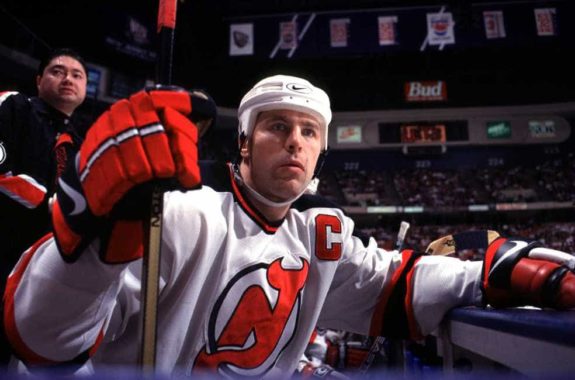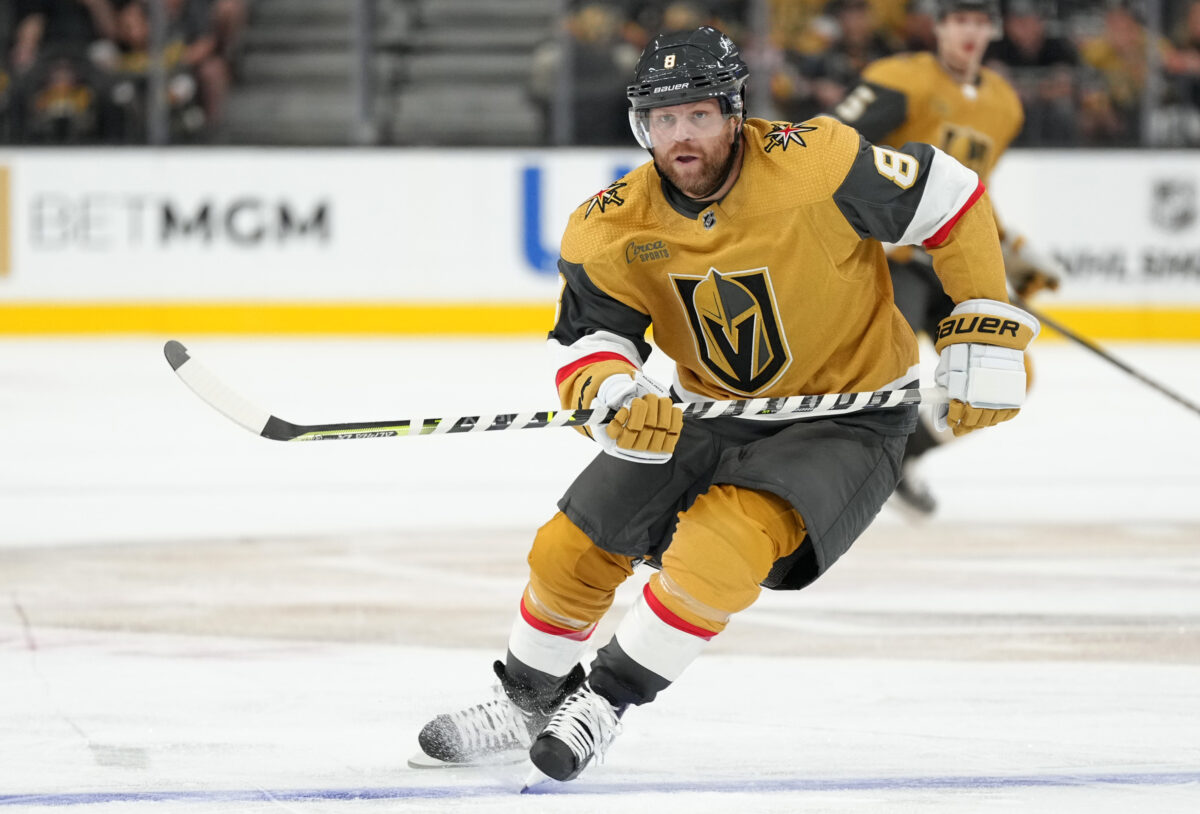Maybe it isn’t the year to make bold predictions that the Montreal Canadiens will make out like bandits at No. 5 overall at the 2024 NHL Entry Draft. They are no doubt in great position to pick a top talent. However, with a projected-to-be-elite player like Macklin Celebrini set to go first to the San Jose Sharks, the Canadiens likely won’t end up with the player of this draft class, like for example at the 1965 NHL Amateur Draft, when they took defenseman Pierre Bouchard (son of Hall of Famer Emile).
Bouchard ended up winning five Stanley Cups, all with the Habs over 12 NHL seasons. Over 595 career games with them and the Washington Capitals, he scored 106 points. Considering the players with whom he played, those aren’t Hall of Fame credentials, but he was only one of two players taken that draft year to so much as play even a single NHL game. Winger Michel Parizeau, taken 10th by the New York Rangers was the other (58 NHL games, three goals, 14 assists).
Related: Montreal Canadiens’ History with the No. 5 Draft Pick
Sticking to the NHL Entry Draft (1979 on), which is more in line with the event fans recognize today, it’s actually common for the fifth-overall pick to surpass the accomplishments of the top pick. When the two play different positions there is an admitted degree of ambiguity. However, here are all the instances where it was fairly clear, ranked in chronological order:
1980: Darren Veitch (Washington Capitals)
The opposite of the above example can be true too, with the Canadiens having selected Doug Wickenheiser first overall in 1980. They infamously made the mistake of taking him over native-son Denis Savard, who went third to the Chicago Blackhawks. Whereas Savard developed into a high-scoring point-per-game player (and Stanley Cup champion, eventually with the Canadiens in 1993) over a 17-year career, Wickenheiser failed to live up to expectations to put it gently.
Wickenheiser played just 556 games over 10 NHL seasons, scoring 276 points. However, this isn’t a comparison between him and Savard but rather him and Darren Veitch, selected fifth that year by the Capitals. Veitch’s 257 points in 511 games almost mirror Wickenheiser’s production. The difference is he was a defenseman.
Ironically, just as Wickenheiser played in Savard’s shadow, Veitch did the same relative to Paul Coffey, on whom the Edmonton Oilers used their sixth-overall pick. Coffey obviously went on to enjoy significant Hall of Fame success, whereas Veitch did just success of the ordinary variety, unfortunately more so than Wickenheiser (for Canadiens fans).
1982: Scott Stevens (Capitals)
Defenseman Scott Stevens may actually have been the best player taken in the Top 5 in 1982, as the only Hall of Famer of the bunch. There’s even a case he was the best player of that entire class, but that’s an entirely different, harder argument (Doug Gilmour).

Back to Stevens, the Philadelphia Flyers took Ron Sutter immediately before him. The Toronto Maple Leafs took defenseman Gary Nylund at No. 3. The Minnesota North Stars took Brian Bellows, who actually might be considered as more valuable than Stevens in some circles at No. 2 (maybe). However, in no world does fellow-defenseman Gord Kluzak merit getting taken first by the Boston Bruins in retrospect.
Kluzak played 299 games to Stevens’ 1635, scoring 25 goals and 98 assists. In contrast, known primarily as a hard-hitting, defensive presence, Stevens scored 196 goals and 712 assists, actually nearing the millennium mark in terms of points in his career, during which he played on three championship New Jersey Devils teams (which he captained).
1983: Tom Barrasso (Buffalo Sabres)
This is one instance where the team that drafted first overall, the North Stars, can be forgiven for not taking the player drafted fifth, Tom Barrasso. While the North Stars probably could have used a goalie of Barrasso’s calibre, they obviously wanted a forward instead, taking Brian Lawton.
The problem is, the three players in between were all forwards too. They all got progressively better: Sylvain Turgeon (Hartford Whalers), Pat LaFontaine (New York Islanders) and Steve Yzerman (Detroit Red Wings).
While under normal circumstances it might be construed as difficult to assess what separates first and fifth-overall picks at different positions, here not so much: Hall of Fame credentials for starters. Barrasso went on to play 777 games in the NHL, eventually backstopping the Pittsburgh Penguins to two straight Stanley Cups (1991-92). To be fair, Lawton had a relatively successful career with 483 games played, but he failed to so much as make it out of the first round past his rookie season. That’s hard to defend.
1990: Jaromir Jagr (Pittsburgh Penguins)
Most years, Owen Nolan would have been a justifiable first-overall pick (Quebec Nordiques). He finished his 1200-game career with 885 points, ironically good for fifth-best of all players drafted in 1990. There wasn’t even all that much variance between his and the totals of Keith Tkachuk (1065), Doug Weight (1033) and Peter Bondra (892).
Enter Jaromir Jagr, who got drafted fifth overall. The Pittsburgh Penguins selection literally more than doubled Nolan’s points with an all-time, second-place 1921 over perhaps an even more astonishing fourth-most 1733 career games.
Now obviously, this is a best-case scenario of which even the wildest minds couldn’t dream. Between Celebrini and whoever the Canadiens take, the former is infinitely more likely be the one to shatter records, but let’s get serious. Even he is a longshot to have a career as illustrious as that of Jagr.
1993: Rob Niedermayer (Florida Panthers)
In contrast to the previous entry, this is the first of two straight instances of the first overall pick having ended up a notorious bust, with the Ottawa Senators having infamously selected Alexandre Daigle first overall in 1993.
Rob Niedermayer may have the reputation of simply being Scott’s younger, less-successful brother, but he did play 1153 games in the NHL himself. And, while Daigle was undeniably more talented, the younger Niedermayer scored 469 points to his 327. Daigle only played 616 games in the league, pointing to a higher point-per-game average. However, it’s abundantly clear Niedermayer was the more dependable of the two by a wide margin.
1999: Tim Connolly (New York Islanders)
The 1999 Draft is famous for two things.
- Then-Vancouver Canucks GM Brian Burke’s behind-the-scenes engineering to get both Sedin twins at Nos. 2 and 3
- The Atlanta Thrashers taking Patrik Stefan at No. 1, with the Czech forward going on to become a huge bust, scoring just 188 points in 455 games
All in all 1999 was a weak draft class, to the point you didn’t have to be a world beater by any stretch to have enjoyed more success than Stefan (or most other first-round picks). For example, the fifth pick, Tim Connolly, neared a point per game in a few of his 11 seasons. However, scoring 431 points in 697 games, he too largely disappointed (concussions admittedly playing a part).
2006: Phil Kessel (Boston Bruins)
If the St. Louis Blues were sold on taking a defenseman, they probably made the right choice going with Erik Johnson at No. 1 overall in 2006. Only Jeff Petry (No. 45) has scored more points in their career. Johnson is meanwhile just a few games shy of 1000 in his career.

Of course, the Blues traded Johnson a few seasons later to the Colorado Avalanche, with whom he won a Stanley Cup in 2022 (albeit as a depth piece). So, they probably weren’t as enamored with him as they had been initially, and could probably have stood to draft one of the four forwards who followed immediately afterward, including Phil Kessel at No. 5.
Now, Kessel is a polarizing figure. However, even if you take issue with his conditioning/work ethic, no one should argue with the end results, which include a return from cancer and a record 1064 straight games played. They also include 992 points in a career featuring three championships, the last in 2022-23 with the Vegas Golden Knights. He hasn’t secured a deal since, but, if this is how he goes out, he goes out on top, having come in at No. 5 (even if he probably could have gone higher).
2012: Morgan Rielly (Toronto Maple Leafs)
The 2012 NHL Entry Draft will go down in Canadiens history as the one in which then-GM Marc Bergevin took Alex Galchenyuk third. However, if hindsight is anything to go by, the Habs should have picked Morgan Rielly instead… relatively recent reports also suggesting Bergevin wanted the Toronto Maple Leafs rearguard, but deferred to his new scouting staff so soon after getting hired.
In retrospect, the Oilers probably should have taken Rielly with their No. 1 pick too. He’s at least the most prolific of the first 10 players taken that year by a wide margin. He might not have singlehandedly spared the Oil years of introspection regarding their defensive issues. However, he could nicely complement their high-octane offense as we speak.
With that in mind, it isn’t hard to imagine Rielly staying with the Oilers just like he has with the Maple Leafs all this time. Considering Bergevin’s at-one-time reliance on stay-at-home defensemen, the same isn’t necessarily true of the Canadiens. That’s neither here nor there, though. The player the Oilers did take, Nail Yakupov, only lasted four seasons with the Oilers and six in the league overall. Anyone would have been better, but Rielly? Much.
